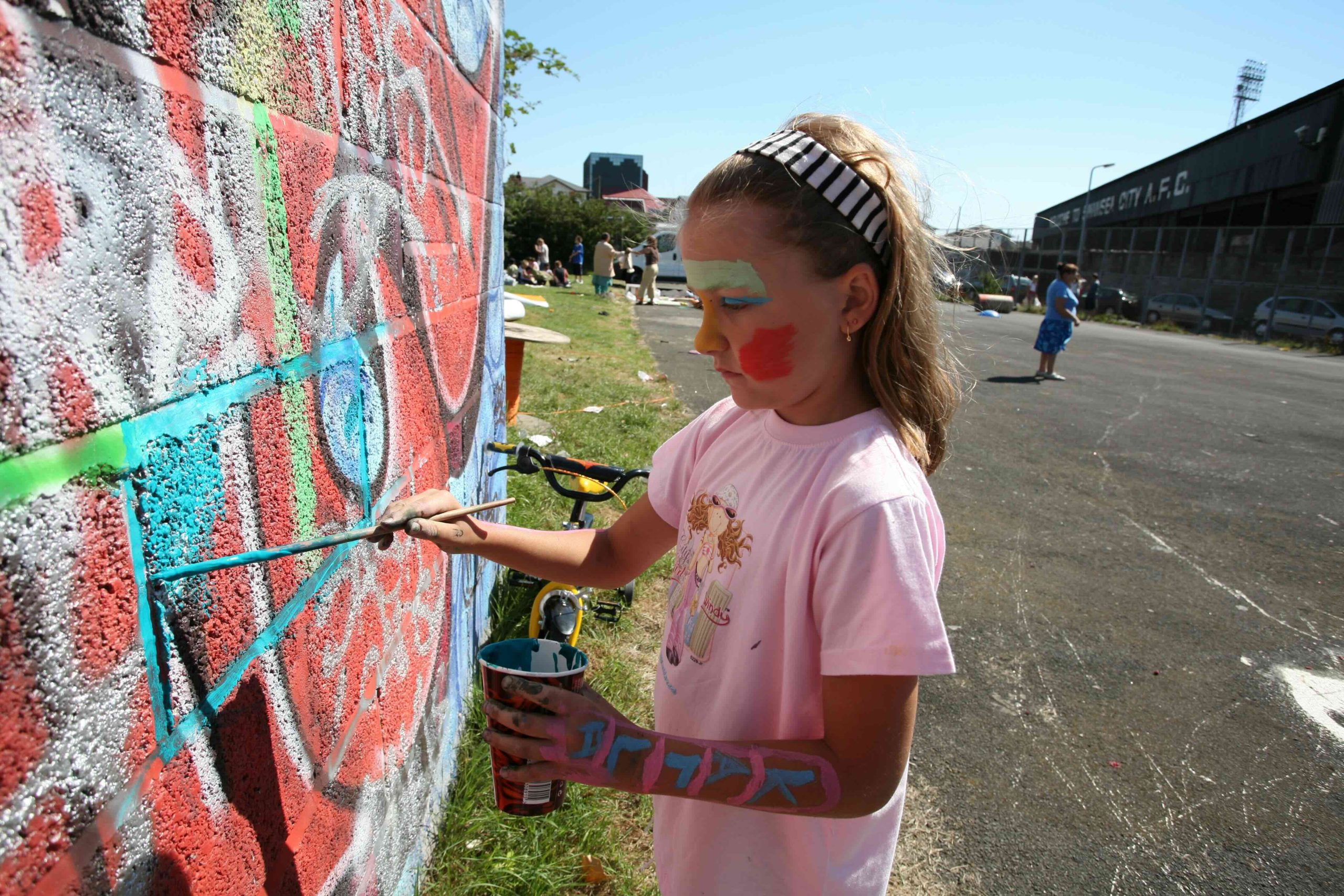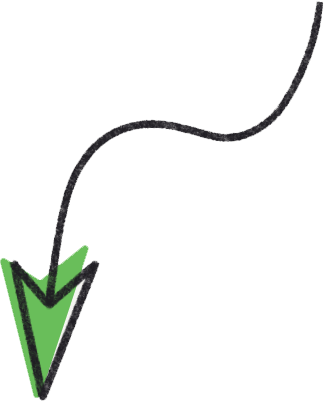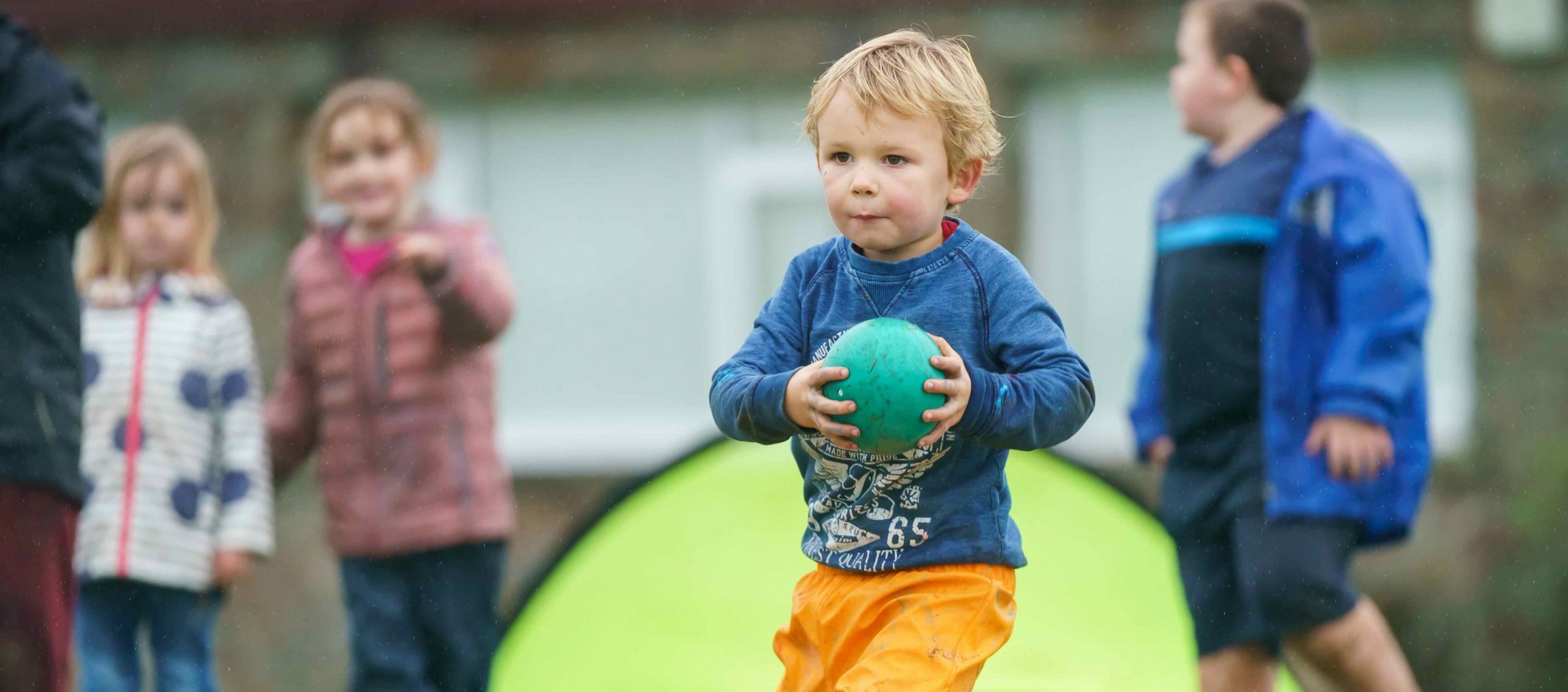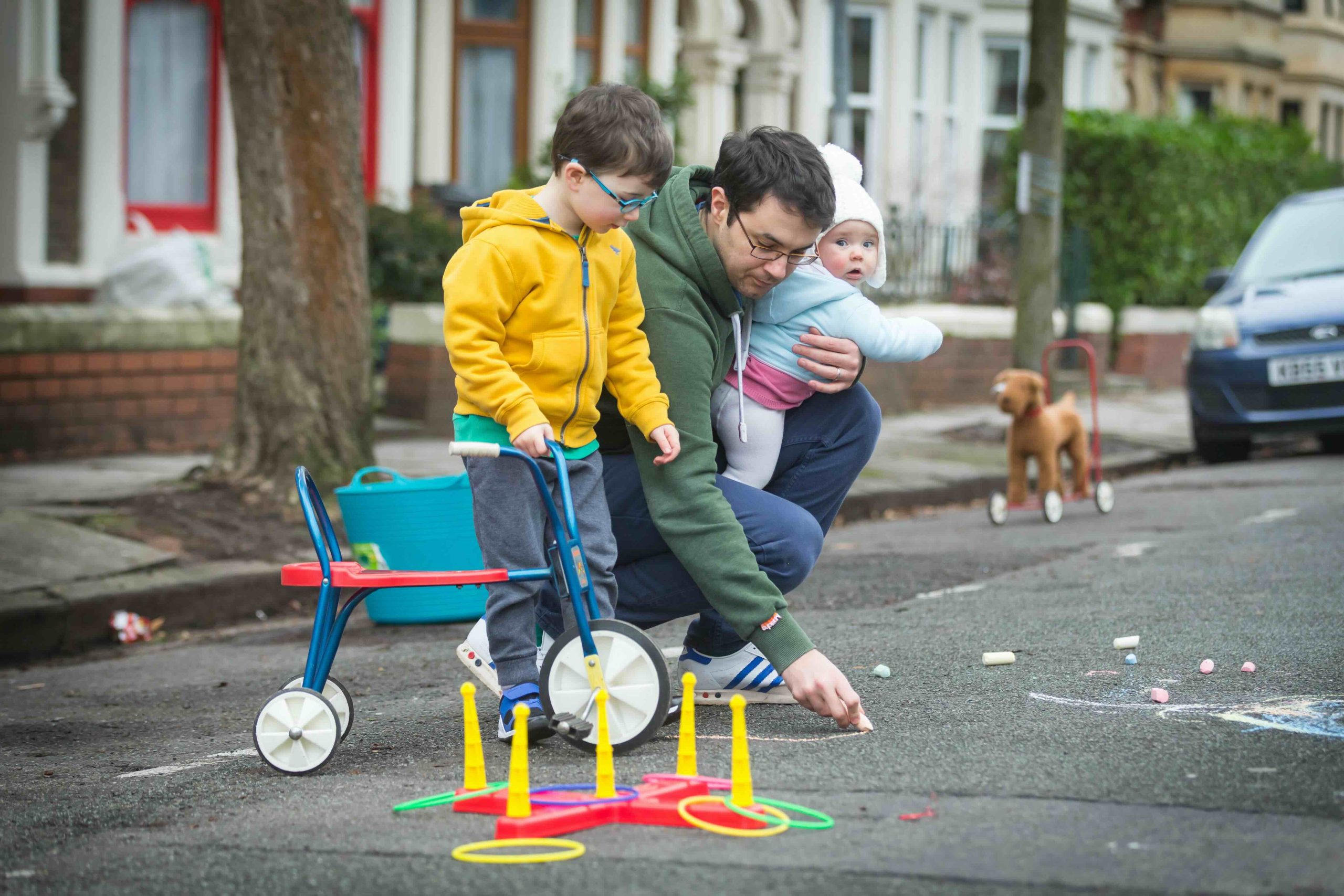Play in the Community
Mythbusters about play spaces
Parents and other adults worry about various things when they are developing or providing play areas – and our experience shows they don’t need to. Here are some of the solutions we’ve come across to address common adult concerns about play spaces – from fencing to graffiti to dog mess:
‘We should discourage teenagers from coming to play spaces’
It’s natural that local teenagers will be interested in a new play space in your community, and they may want to socialise there. To make this work as well as possible, get teenagers involved in the design so that it includes something that is good for them, too.
‘Graffiti is a sign of vandalism’
Graffiti is part of teenage culture. It’s a way they show ownership of a space, so you could see it as a sign of a successful play space that works for all ages. Play areas for bikes, scooters and skateboards are particularly likely to get graffiti. The same is true of other play equipment that teenagers use.
Graffiti walls are sometimes used as a solution, but they don’t tend to work in the long term. Teenagers prefer to tag things that are important to them (for example swings, ramps and shelters), rather than a plain wall.
'We have to put a metal fence around a play space – it’s the law’
It isn’t compulsory to put any kind of fencing around a play space. The reasons why people might choose to surround a play space with a fence or other boundary include:
- It’s for young children and it would be dangerous if they could run off
- It’s close to a busy road or water
- They want to discourage dogs from coming in.
However, young children are likely to be supervised by a parent. And children generally want to leave a play area because other things outside it seem more appealing. Make the play area as interesting and varied as its surroundings and children will want to stay.
If you decide to create a fence or boundary around your play space, choose features that blend with the surroundings, or that make it more playful. Good examples are wooden fences, walls that can be climbed, and hedgerows.
'Sand causes problems with dogs’
Unless there are already problems with dog mess in the area, it's unlikely that sand will attract new dogs. However, if you do have sand, regular raking and checking will need to be part of your regular maintenance.
Most dog owners are responsible. If there’s a problem, it’s usually a small number of owners, so target them:
- Get children to design ‘No Fouling’ signs
- Ask your local dog warden for support.
'We should discourage other adults from coming to play spaces’
Play spaces are community spaces and should be shared. This works well for everyone:
- Parents, carers and grandparents will enjoy a shared space where they can meet other adults and children can play.
- Children will benefit, too, as there will be adults nearby to help if they get hurt, or if there is any bullying or anti-social behaviour.













